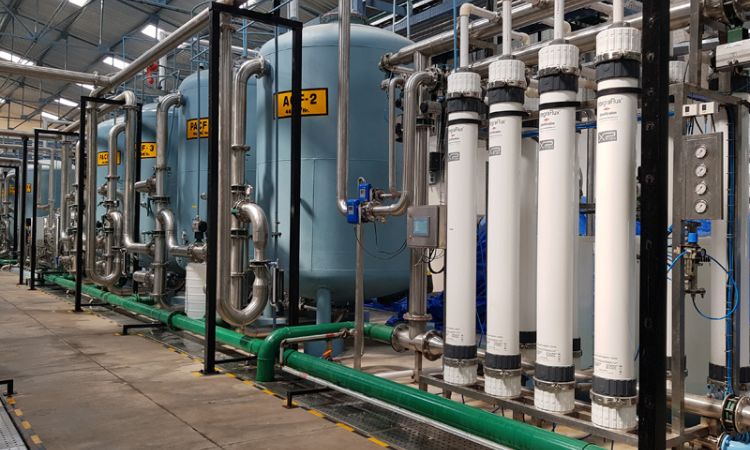The Future of Filtration: Analyzing the Ultrafiltration Market (2024-2032)

Ultrafiltration (UF) is a pivotal technology in water purification and various industrial processes, known for its efficiency and effectiveness in separating contaminants from liquids. The global ultrafiltration market size reached a value of around USD 2.02 billion in 2023. The market is further expected to grow at a CAGR of 13.9% between 2024 and 2032, reaching a value of around USD 6.50 billion by 2032. This rapid growth is driven by increasing water scarcity, stringent food safety regulations, and a rising demand for high-quality pharmaceuticals. In this blog post, we will delve into the factors influencing this market, explore its segmentation, assess regional dynamics, and highlight the competitive landscape shaping its future.
Market Overview
Ultrafiltration is a membrane filtration process that operates by using pressure to force a liquid against a semipermeable membrane. This technology is capable of removing particles, bacteria, and larger molecules, making it indispensable in various applications, including municipal water treatment, food and beverage processing, and pharmaceutical manufacturing. As the demand for clean water and safe food products escalates globally, ultrafiltration is emerging as a crucial solution, propelling its market growth.
Market Size and Growth Forecast
The ultrafiltration market has shown significant momentum in recent years, with a current size of approximately USD 2.02 billion. The forecasted growth rate of 13.9% CAGR from 2024 to 2032 underscores the increasing reliance on advanced filtration technologies across multiple sectors. Factors such as the growing global population, urbanization, and industrial expansion are intensifying the need for effective water treatment solutions. Additionally, the rising awareness of health and safety standards in food and beverage processing is driving companies to invest in ultrafiltration systems, further boosting the market.
Market Segmentation
The ultrafiltration market can be segmented into several categories, each contributing uniquely to the overall growth trajectory.
A. By Material Type
- Polymer: Polymer membranes dominate the ultrafiltration market due to their cost-effectiveness and versatility. Commonly made from materials like polysulfone and polyethersulfone, polymer membranes are used extensively in municipal water treatment and food processing applications. Their adaptability to different processes makes them a preferred choice, contributing significantly to the market share.
- Ceramic: Although more expensive than polymer membranes, ceramic membranes offer superior durability and resistance to harsh chemicals and high temperatures. This makes them particularly suitable for pharmaceutical and food applications, where cleanliness and compliance with strict regulations are paramount. The ceramic segment is gaining traction, especially in sectors where longevity and reliability are critical.
B. By Product Type
- Hollow Fiber: This product type is renowned for its high surface area and efficiency. Hollow fiber membranes are widely used in water treatment facilities due to their ability to handle large volumes of water with minimal energy consumption. Their design facilitates easy maintenance, which is a significant advantage in industrial settings.
- Plate and Frame: Plate and frame systems are ideal for applications requiring high filtration rates and flexibility in configuration. They are often employed in food and beverage processing and other industrial applications. Their modular design allows for scalability, making them a popular choice among manufacturers.
- Tubular: Tubular membranes are known for their robust design and ease of cleaning. They are particularly useful in wastewater treatment and industrial processes that generate viscous fluids. As industries increasingly focus on sustainability and waste reduction, the tubular segment is expected to see substantial growth.
C. By Application
- Municipal Water Treatment: The growing concerns over water quality and safety have placed municipal water treatment at the forefront of ultrafiltration applications. This segment is expected to witness significant growth, driven by investments in infrastructure and advancements in filtration technologies.
- Food and Beverage Processing: With stringent regulations on food safety and quality, ultrafiltration has become essential in the food and beverage industry. It helps in clarifying beverages, concentrating flavors, and ensuring the removal of pathogens. As consumer preferences shift toward healthier and safer products, the demand for ultrafiltration in this sector will continue to rise.
- Pharmaceutical Drugs Processing: The pharmaceutical industry demands the highest purity standards, making ultrafiltration crucial for drug manufacturing processes. This segment is expected to grow significantly as companies strive to comply with regulatory requirements and ensure product safety.
- Others: Other applications include biotechnology and chemical processing, which are gradually recognizing the benefits of ultrafiltration technologies. As these industries evolve, the demand for advanced filtration solutions will likely increase.
Regional Analysis
The ultrafiltration market exhibits diverse dynamics across different regions:
- North America: This region leads the market due to advanced infrastructure and stringent regulations on water quality and safety. Increased investments in water treatment technologies are also driving growth.
- Europe: The European market is characterized by a strong emphasis on sustainability and environmental regulations. Countries are increasingly adopting ultrafiltration technologies to meet compliance standards, particularly in municipal water treatment.
- Asia-Pacific: This region is experiencing rapid urbanization and industrialization, leading to increased demand for water treatment solutions. The growing population and rising awareness of health issues are also propelling the ultrafiltration market.
- Latin America and the Middle East & Africa: These regions are gradually adopting ultrafiltration technologies, driven by initiatives to improve water quality and availability. However, challenges such as limited infrastructure and funding may impact growth.
Competitive Landscape
The ultrafiltration market features a competitive landscape with several key players striving for innovation and market share. Leading companies are focusing on product development, strategic partnerships, and mergers and acquisitions to enhance their market positions. Notable players include companies like GE Water & Process Technologies, Veolia Water Technologies, and Koch Membrane Systems, which are constantly investing in research and development to meet evolving customer demands.
Challenges and Opportunities
While the ultrafiltration market presents numerous opportunities, it also faces challenges. High initial costs of advanced filtration systems can deter smaller enterprises from adopting these technologies. Additionally, competition from alternative filtration methods, such as reverse osmosis, poses a threat to market growth.
However, these challenges also present opportunities for innovation. Companies that can develop cost-effective, high-performance filtration solutions will likely gain a competitive edge. Moreover, the increasing emphasis on sustainability and waste reduction opens avenues for ultrafiltration technologies in various sectors.
Future Trends
Looking ahead, several trends are expected to shape the ultrafiltration market. The development of smart filtration systems, integrated with IoT technologies, will enable real-time monitoring and optimization of filtration processes. Furthermore, advancements in membrane materials and designs are anticipated to enhance efficiency and reduce operational costs.
The push towards sustainability will continue to influence the market, with a growing focus on recycling and waste management solutions. As industries become more environmentally conscious, the demand for ultrafiltration technologies that align with these values will increase.





